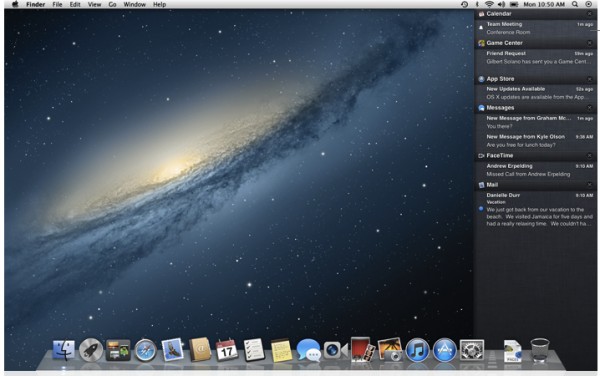Mountain Lion downloaded 3 million times in 4 days: what it means for market share

Apple released OS X 10.8 Mountain Lion on July 25, and based on that small sliver of time, data analysis company Chitika released a statistic forecasting Mountain Lion's adoption rate, claiming a 3.21 percent OS X market share in just 48 hours. Five days after the release, Apple has announced Mountain Lion downloads exceeded 3 million in just four days. What does all of this mean?
Apple responded rather quickly last year after OS X Lion’s release, claiming 1 million downloads in the first 24 hours. Yet, with Mountain Lion, 3 million downloads in the first four days averages out to 750,000 downloads per day. Granted that's an estimate, but it would actually place Mountain Lion behind Lion based on first day downloads.
There's further evidence to support this theory, as the Chitika study points out that the Mountain Lion adoption rate considerably increased after the first day, accounting for a very slow first day start. So why is Apple calling it "the most successful OS X release in Apple’s history," according to the press release?
Philip Schiller, Apple’s senior vice president of Worldwide Marketing is quoted: "Just a year after the incredibly successful introduction of Lion, customers have downloaded Mountain Lion over three million times in just four days, making it our most successful release ever,” but if it is as popular as they say wouldn’t it have made sense for Apple to deliver a press release claiming more than 1 million downloads in the first 24 hours?
Judging by the average, last year’s press release, and this year’s lack of a first day download tally, Mountain Lion likely started slow, with downloads increasing the following days. But there's more to it than first day downloads. During the WWDC keynote, Apple claimed that they have shipped 26 million OS X Lion copies; that placed it at 40 percent market share two months ago, so how does the statistic from Chitika fare against official Apple numbers?
The numbers posted by Chitika are in direct contradiction to the numbers posted by Apple at WWDC, but also to the numbers posted by Net Applications which for June 2012 paint a completely different picture. Not only is OS X 10.7 at a 46.49 percent adoption rate, but it’s also higher than OS X 10.6 which only has a 38.24 percent market share; this hierarchy is inverted on Chitika’s statistics with OS X 10.7 having a 34.97 percent share and OS X 10.6 dominating it with a 45.51 market share.
If Net Applications claims that OS X 10.7 has a higher market share than OS X 10.6 in June, it doesn’t make sense for Chitika to invert that ranking and place OS X 10.6 at the top, in July. By comparing the two sets of numbers it would appear that Mac users have massively downgraded from Lion to Snow Leopard in just a month; an extremely implausible scenario.
The most realistic estimate of Lion market share is given by Apple, which is the only one that can actually count the number of units sold. Actual market share for Apple’s latest OS version is somewhat difficult to determine at this point.
Chitika's numbers on Mountain Lion adoption rate are just an estimate and don't tell the whole story, but 3.21 percent seems like a fair estimate for the first two days; or 1.6 percent per day.
However, we can make an estimate of our own.
Apple claimed at WWDC that there are 66 million Mac users worldwide, and combined with the 3 million downloads Mountain Lion has that we know of, it would make for a rough estimate of a 4.5 percent market share in four days.
Chitika claims that OS X Lion had a 14 percent market share in the first three months and by the current estimates it seems that even though Mountain Lion didn’t start as well as Lion, it’s going to fare even better than its older brother in three months.
